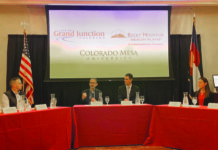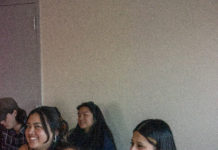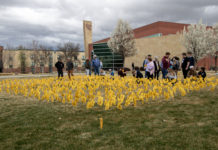In the spring of 2018, the US Air Force (USAF) plans to begin construction of a high-power telescope on top of the Grand Mesa as part of a roughly ten-telescope series called the Falcon Telescope Network. USAF will also partner with smaller teaching-focused universities to make the telescopes’ data available to students and to the public.
The Ritchey-Chrétien telescopes can “see” objects of 16th magnitude brightness, or approximately 10,000 times dimmer than the faintest objects visible to the naked eye. They will be used to characterize satellite orbits as part of an active training program at the Air Force Academy in Colorado Springs.
Jared Workman, associate professor of physics at Colorado Mesa University, says he will be shifting the focus of his research with the construction of the telescope. He hopes it will help bring an interest in astrophysics to CMU and the Grand Valley community.
“It will massively broaden the number of people who can do work with the physics department,” Workman said. “My goal, in the long run, is to get data available to K-12 teachers. What I’d like to do is basically be able to put some data and some imagery into every science class in District 51.”
Grand Mesa currently houses a small observatory, founded by John and Vicki Mansur, which will provide the site for the new telescope. The Mansurs will lead construction of the building while the USAF will deliver and construct the telescope. While the telescope itself will not be open to the public, the community can attend public observing sessions with smaller telescopes at the observatory and spread interest in astronomy and astrophysics.
“We just want to get people coming up there and aware that it exists,” Workman said.
Grand Mesa provides an ideal location for the telescope due to reduced light pollution, low humidity, and high elevation. The climate and atmosphere allow astronomers to view space with minimal turbulence and interruptions.
“You want dark skies for this kind of thing,” Workman said. “This area is good in general […] the drier and the higher, the better.”
After construction during the spring and summer months, Workman hopes the telescope will be ready for use by the beginning of the fall semester of 2018. Until then, Workman encourages students and community members to attend observing sessions and “star parties” at CMU and at Grand Mesa Observatory.
“If you notice there’s an observing event, bring anyone and everyone you know,” Workman said. “It’s open to anyone. The more, the merrier.”






We will be hosting an observing event this Saturday at 5:30. http://www.grandmesaobservatory.com/contact-us.html
Please dress warmly, it will be cold. Hats, gloves, jackets, and long underwear are a must.